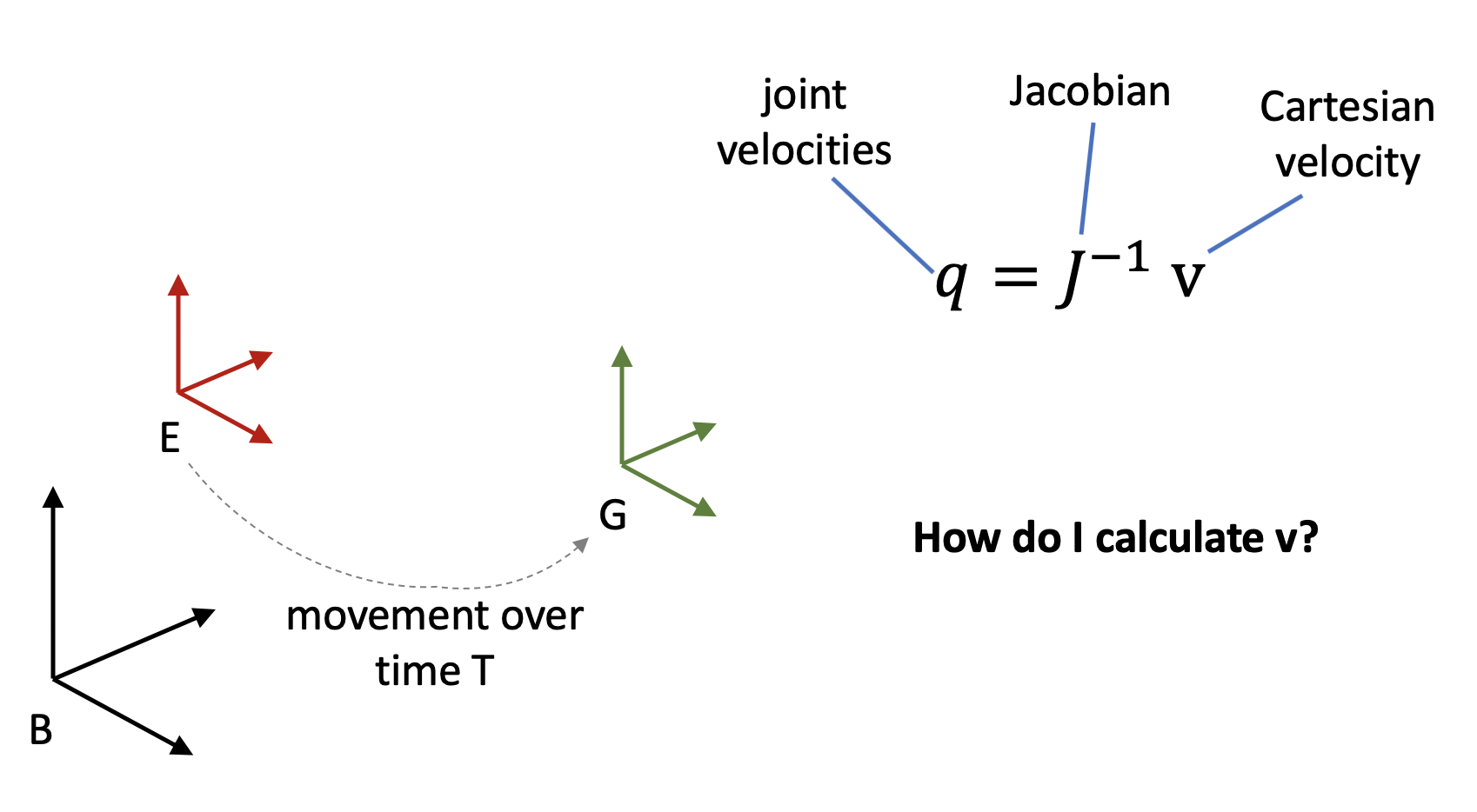I am really struggling to understand how to do Cartesian velocity control when 3D rotations are involved. So, below is a very simple example which I am hoping somebody can help me with.
Let's say the base frame of my robot is labelled $B$, the end-effector frame is labelled $E$, and the goal frame is labelled $G$. So, the Cartesian pose of the end-effector relative to the base can be expressed as a matrix $T_{BE}$, and similarly, $T_{BG}$ for the goal. The Jacobian, which describes the rate of change of the end-effector about the base frame, is $J$.
I want to move the end-effector from $E$ to $G$, in time $T$. To do this, I can create a loop which continually calculates the required Cartesian velocity of the end-effector, about the base frame. This is a vector length 6, containing translational velocity about the base's x-y-z axes, and rotational velocity about the base's x-y-z axes. We call this velocity vector $v$. Then, I will move the end-effector at this velocity, using the inverse Jacobian to calculate the required velocities of the joints, $q$. This equation is $q = J^{-1} v$.
However, what I don't understand, is how to calculate $v$, which is the required Cartesian velocity of the end-effector about the base frame. I know how to do this with 1D rotation: I would just take the difference between the current angle and the goal angle, and divide by $T$. I also know how to do this in 3D if the motion only involves translation, and no rotation: again, I can find the difference in the current and goal position. But when 3D rotations are involved, I don't know how to do this.
I have tried converting matrices $T_{BE}$ and $T_{BG}$ into Euler representations (with X-Y-Z rotations about $B$), and then finding the difference in the three components of the Euler vectors, between $T_{BE}$ and $T_{BG}$. My intuition was that I could then divide these three components by $T$, and this would give me the rotational velocity components of vector $v$. However, I have implemented this, and I do not get the desired behaviour. I think that this is because the three rotational components are dependent on each other, and so I cannot simply treat each one independently like this.
So, can anybody help me please? How can I create the rotational components of vector $v$, given the current pose $T_{BE}$ and the target pose $T_{BG}$?
The below image summarises the problem:
